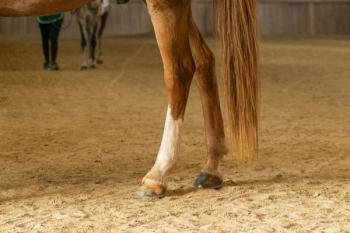
Joint replacement: Hips, knees and elbows (Proceedings)
Certainly hip replacement has the longest history, and the best prognosis, but it is important to note that elbow replacement has now been available for a decade and knee replacement for nearly a year.
Total joint replacement in the dog has been performed clinically for 45+ years. Certainly hip replacement has the longest history, and the best prognosis, but it is important to note that elbow replacement has now been available for a decade and knee replacement for nearly a year.
The primary indication for joint replacement is severe osteoarthritis (OA) in a joint that causes lameness, pain, diminished limb function and a decrease in the patient's quality of life. It is important to note that severe radiographic disease alone is not an indication for joint replacement. In fact, is has been reported that the relationship between radiographic and clinical disease is poor and quite unpredictable. Good client communication prior to surgery is of paramount importance. Clients must understand the probability for success and failure, potential long-term constraints on the patient's activity following surgery, have the ability to follow instructions for post-operative care of the patient, and have the financial resources to pay for what is generally a comparably expensive initial procedure that may have complications requiring expensive subsequent procedures. Finally, the surgeon, and surgical assistants, should be adequately trained in performing joint replacement and be dedicated to all surgical principles (especially asepsis) necessary to optimize the chance for surgical success.
The most common indication for hip replacement is coxofemoral pain associated with canine hip dysplasia (CHD). However, the pain can also be from primary OA unrelated to CHD, chronic hip luxations, failed femoral head and neck ostectomies, severe femoral head or neck fractures, malunions after acetabular, femoral head or neck fractures and from avascular necrosis of the femoral head. Although hip replacement can be performed in a wide variety of canine patients the ideal patient is middle aged, a medium or large breed, and behaves well enough that it will not reduce the chance of success following surgery. Perhaps the most commonly encountered contraindication for hip replacement is concurrent orthopedic disease in the affected limb. Frequently patients will present with a history of unilateral rear limb lameness and radiographs documenting the presence of severe hip OA. When a patient presents for hip replacement the physical exam should be utilized to confirm that presence of hip pain and the absence of stifle pain. Clinicians should be especially careful when the patient history and physical exam include documentation of unilateral rear limb lameness. When a patient has pain from both a torn cranial cruciate ligament and hip OA performing hip replacement alone will rarely improve the patient's limb function. In general, address the stifle pain first. Neurologic dysfunction in the proposed hip replacement limb is a contraindication if the neurologic disease is progressive and/or will affect outcome. Similarly, a dog with clinical signs associated with lumbosacral disease should not have hip replacement until after the lumbosacral problems are resolved. Ongoing local or systemic infection will increase the probability of operative contamination or bacteremia and are contraindications to hip replacement. Likewise, the patient should be evaluated for clinical signs of bacterial cystitis, gingivitis and otitis externa prior to surgery. Previous surgery at the hip is not necessarily a contraindication but the owners should be informed that prior joint surgeries will likely double the chance for infection. Previous surgeries may complicate the surgical procedure by changing anatomical landmarks and increasing periarticular fibrosis. Total hip replacement, although not encouraged because they may have a higher complication rate, can be successfully performed following triple pelvic osteotomy or femoral head and neck excision.
Total elbow replacement in the dog was first reported in the dog in proceedings in the mid 1990's by Dr. Ralph Lewis. Since that time many elbow replacement systems and courses have been available offered. However, to date, only one system has been on the market for 3+ years. To date, only two peer-reviewed publications address elbow replacement. In a 2003 a manuscript describing total elbow replacement reported that 16 of 20 or 80% had an improvement in limb function, as measured by force platform gait analysis, at 1-year after surgery. On average, ground reaction forces in those 16 patients had increased by more than 25% with the majority of the improvement occurring by 3-months after surgery. Complications occur in some of the remaining patients with lateral luxation being the most common. Another new system is available that resurfaces part of the joint. As one would expect it has some advantages and disadvantages. Only time and science will determine if it truly is an improvement.
Total knee replacement has been reported on a case by case basis in proceedings for many years. In addition, knee replacement has been performed extensively in normal dogs when used as an animal model for human disease. Thus, the design and implementation of total knee replacement was comparatively easy and intuitive. My clinical impression is that dogs can have a very good outcome following knee replacement. However, this opinion is based from only a small number of cases that I have managed.
When joint replacements fail one must have alternatives. For the hip it is femoral head and neck excision and for the knee and elbow it is arthrodesis.
Newsletter
From exam room tips to practice management insights, get trusted veterinary news delivered straight to your inbox—subscribe to dvm360.






